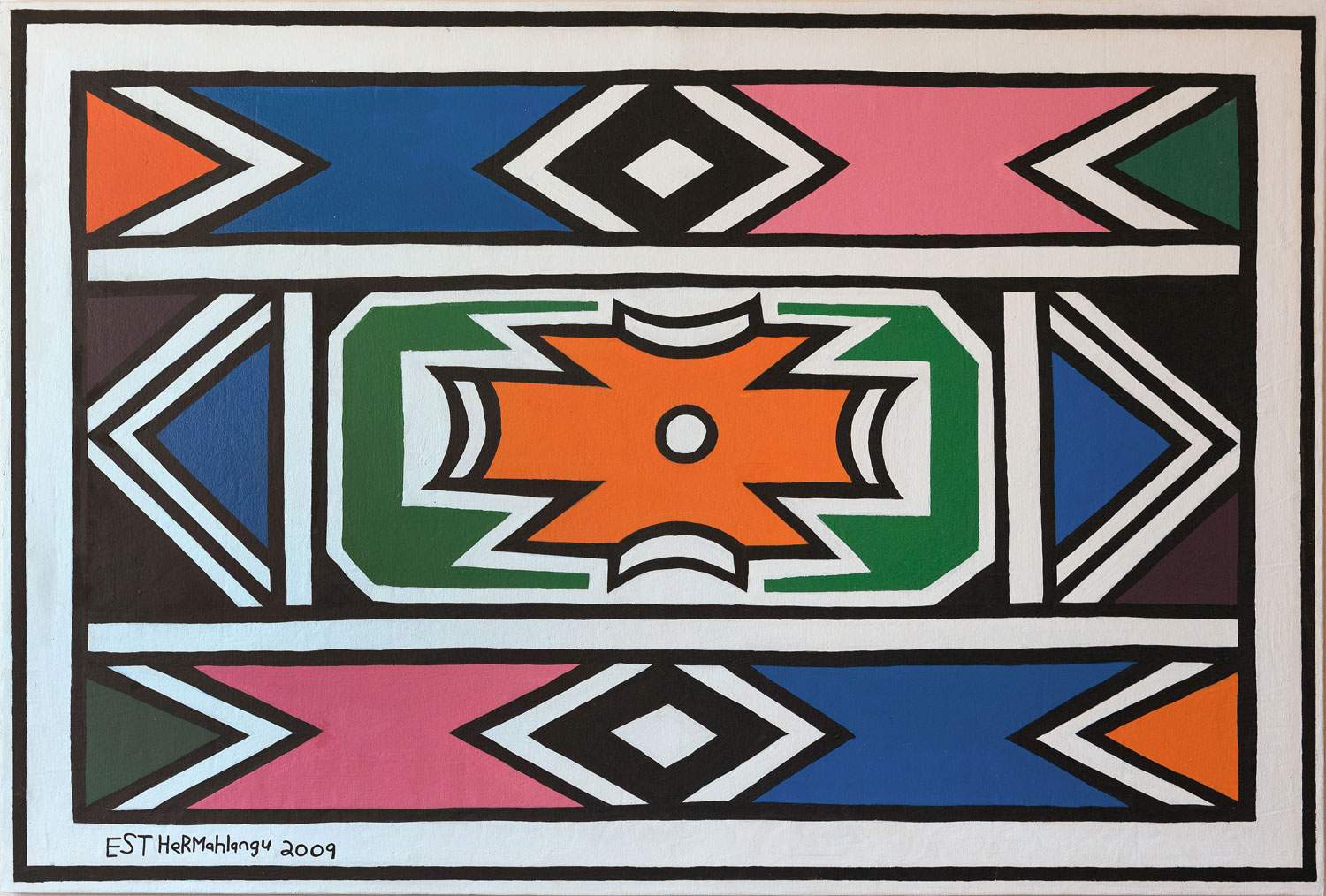Through Nov. 20, 2021, 210 Gallery at Vik Gallery in Milan, Via Silvio Pellico 8 (Galleria Vittorio Emanuele) hosts Cuore di tenebra, an exhibition of contemporary African art curated by Alessandro Romanini featuring some of the great protagonists of Africa’s contemporary scene: Nu Barreto, Frédéric Bruly Bouabré, Gonçalo Mabunda, Mario Macilau, Ester Mahalangu, Chéri Samba, Cyprien Tokoudagba and Mederic Turay. Contemporary African art, a living matter in constant becoming, genetically refuses to be enclosed in predefined categories: countries and forms of expression that in the span of six decades have shifted from the identity claim of negritude (as witnessed by the pioneering Dakar School) even in the artistic sphere, following the example of the great fathers of the “new free Africa” such as Martiniquais Aimé Cesaire, Guyanese Leon Gondrand Damas, and Senegalese poet-president Leopold Sedar Senghor, to the stylistic features and dynamics peculiar to the so-called diaspora up to today’s original forms in line with Edouard Glissant’s concept of “creolization.”
The works in the exhibition describe the arc of socio-political and iconographic experiences traversed over the decades by African art and above all testify to the linguistic evolution, from the pioneering phase through that of the diaspora to reach the phase of “maturity,” of a syncretic character. A synthesis of the negritude-assimilation dialectic, constituted by a modern expressive koine, proper to the artists of the ancient continent, able to maintain the link with that ancestral titanic instinctiveness and the ritual dimension of the creative act, with attention to new iconographies and the dynamics of the international artistic debate. The assembled group of artists highlight with their works how indebted they are to that “ambiguous adventure” mentioned in the title of Cheikh Hamidou Kane’s novel of the same name, which triggered a struggle for the re-conquest of an identity lost to colonialism and at risk of liquefaction due to pervasive technological invasion. The works in the exhibition also want to bear witness to a postmedialism, with a constant mixing of media and media, genres and registers, which is not assimilation of a Western status of artistic debate, but a genetic condition, linked to the magical dimension of artistic action, inseparable from their creative process.
From the social commitment of Mozambican Mario Macilau, through the pioneering works of “fathers and mothers” of contemporary African art such as the Ivorian Frédéric Bruly Bouabré and his picto-graphic “postcards” related to the Beté people, to the Congolese Chéri Samba with his paintings thematically linked to his land, both featured in the epochal exhibition Magiciens de la Terre hosted in 1989 at the Centre George Pompidou in Paris, as well as in prestigious international punblical and private exhibitions. Gonçalo Mabunda’s masks and thrones plastic sublimations of Mozambican civil conflicts, a reinterpretation of identity and power ritual paraphernalia, find space in the exhibition alongside the more expressively subversive and stylistically updated dimensions of cosmopolitan figures such as Ivorian Mederic Turay. The socio-political engagement of Guinea-Bissau artist with Parisian studio Nu Barreto is nimbly declined between collage with found objects and learned painting, while South African Esther Mahalangu, despite her conquered international fame, status as an artist representative of her country’s art history and presence in major collections, has always continued to work in her native village.
Instead, on the second floor, in the spaces of Bart, the bar-restaurant that also overlooks Galleria Vittorio Emanuele, are the works of numerous artists of different nationalities who have been influenced in their work by the atmospheres of the ancient continent. Here then, among others, is a fabric designed by Massimo Giacon in the 1990s for Memphis with African atmospheres, two paintings by Felipe Cardeña also made with African fabrics, a “dark head” by Livio Scarpella made of ceramics and mosaic tiles, a large map of Africa by Michael Gambino made with colored butterflies, and more “Africanizing” works by Massimo Caccia, Annika Geigel, and Giorgio Tentolini with works dedicated to the faces of black girls. The exhibition closes with a small nucleus of drawings by Pino Pascali from the 1960s made for an advertising campaign in which he was inspired precisely by the atmospheres and visions of Africa.
In the photo: Ester Mahlangu, Untitled (2009, oil on canvas, 180 x 120 cm)
 |
| Milan, in Heart of Darkness Gallery, exhibition on contemporary African art |
Warning: the translation into English of the original Italian article was created using automatic tools. We undertake to review all articles, but we do not guarantee the total absence of inaccuracies in the translation due to the program. You can find the original by clicking on the ITA button. If you find any mistake,please contact us.